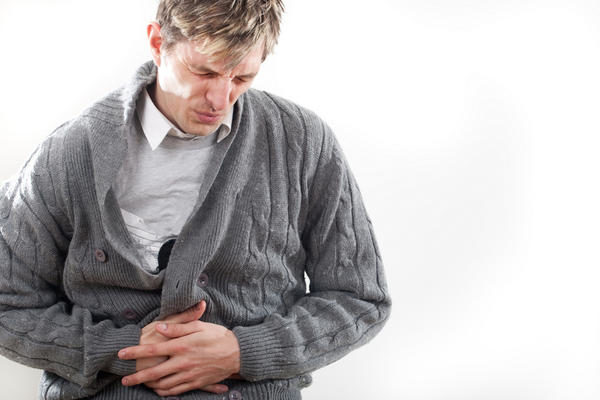 Epididymitis is an infection of part or all of the epididymis, usually ascending, ductal, from urethritis or urological disease. If this infection wins, by proximity, the testicle, it is an orchi-epididymitis.
Epididymitis is an infection of part or all of the epididymis, usually ascending, ductal, from urethritis or urological disease. If this infection wins, by proximity, the testicle, it is an orchi-epididymitis.
CLINIC:
Acute epididymitis is the most common picture, settling in one or two days:
– unilateral scrotal pain, sharp, radiating to the groin;
– thickening of the epididymis, red and hot skin opposite, pain caused at the level of the epididymal tail which is indurated; the spermatic cord is tight and sensitive;
– fickle fever (most often around 38.5 ° C);
– Bilateralization only in 10% of cases.
In the most acute or advanced cases, the disease spreads to the testicle producing acute orchitis.
The acute orchi-epididymitis results in:
– by inflammatory pain and swelling of the testicle, making it difficult to palpate the epididymis, which is poorly defined;
– sometimes with a hydrocele blade.
Scrotal ultrasound shows an epididymis increased in volume, of heterogeneous structure, with more or less thickened envelope, and specifies the testicular state.
You have to search systematically balanitis, urethral discharge, prostatitis by rectal examination.
TECHNOLOGY:
In the young subject:
There is usually a context of sexually transmitted disease (STD):
– a urethral discharge is frequent, signifying a urethritis (but not constant);
– acute prostatitis can coexist, as can balanitis.
The key consideration here is the urethral swab looking for :
– Chlamydia trachomatis (request for rapid diagnosis, and serology);
– Gonococcus, isolated or associated with the preceding germ;
– Ureaplasma urealyticum, Candida, Trichomonas … much more rarely.
Routine HIV testing (and syphilis) should be offered.
In the mature subject and even more the elderly subject:
The context is most often a urological pathology:
– known: urethral stricture, recent catheterization, intervention on the prostate, neurological bladder, etc. ;
– to look for: prostatic adenoma (adenomatitis), chronic prostatitis, etc.
The most important examination here is the ECBU with first-shot collection, looking for pyuria with the usual uropathogenic germs: Escherichia coli, Proteus, more rarely Streptococcus D, Bacillus pyocyanis,
Staphylococcus aureus, enterococci …
Blood cultures are rarely positive (an epididymitis occurring haematogenously during bacteremia is exceptional).
Examination of prostatic secretions collected after prostatic massage is very rarely requested (against indicated in case of prostatitis).
A complete urological examination is essential: ultrasound, IVU with urethrography urinary or uroscanner, specialist opinion.
DIFFERENTIAL DIAGNOSIS:
In a teenager or a young adult, it is necessary to evoke a testicular torsion (torsion of the cord): the local inflammatory signs are not accompanied by fever and the Doppler of the spermatic vessels realized at the slightest doubt shows an abolition of the flow.
In children, classically there is no acute orchi-epididymitis (except presence of a malformative uropathy with infection): cord twist is to be evoked +++: surgical emergency, after performing a duplex ultrasound .
Another diagnosis: acute testicular cancer is exceptional.
TREATMENT:
Antibiotherapy usually probabilistic in first intention:
– ceftriaxone (Rocephine), 500 mg in one injection the first day, after completion of the bacteriological investigations;
Then doxycycline (Vibramycin) 200 mg / day in one dose, active on Chlamydia;
– or ofloxacin (Oflocet) 200 mg 2 / d, per os or ciprofloxacin (Ciflox) 500 mg 2 / d, per os, among others fluoroquinolones.
This treatment is maintained for 10 to 15 days.
Fluoroquinolones are very well suited to the treatment of epididymitis and orchi-epididymitis.
Cotrimoxazole (Bactrim forte) is also a good treatment, with excellent prostatic diffusion.
If there is an associated prostatitis, the duration of treatment should be 4 to 6 weeks.
In all cases, an adaptation to the antibiogram of the germ in question is necessary.
Wearing a suspender can be useful.
Analgesics or NSAIDs are indicated depending on the pain.
Healing is usual. A small, sequella nodule may persist. Complications are rare: abscess (diabetic), recurrence (if insufficient treatment).
In case of STD, treat the partner (s).
Preventive treatment consists of the use of condoms for STDs. In the case of catheterization or urological intervention, antibiotic prophylaxis and, possibly, the use of small diameter probes that do not obstruct the drainage of prostatic secretions.
OTHER ORCHI – EPIDIDYMITIS:
Other etiology, much rarer, are possible.
– Tuberculosis : subacute trailing form, evocative antecedents, amicrobial pyuria. Atypical mycobacteria may be involved, or a complication of BCG therapy for a bladder tumor.
– Brucellosis rarely gives orchi-epididymites. The clinical context is generally suggestive, sterile ECBU and Wright’s serodiagnosis positive.
– During AIDS can appear toxin-related orchi-epididymitis, Mycobacterium avium and fungal agents.
– Excluding infectious causes, various systemic diseases may be involved: sarcoidosis, periodic illness, Behçet’s disease, PAN, rheumatoid purpura.
– Among the drugs, Amiodarone (Cordarone) has been exceptionally implicated.
– Mumps orchitis does not affect the epididymis: it does not therefore constitute an epididymitis orchi-epididymitis. The context allows the diagnosis.

Leave a Reply